Save the Adventure (18)
By:
November 1, 2013
For the Survival Epic sub-genre of Adventure, the invisible prison is PHYSICAL FRAILTY. The physical sensation of tramping, climbing, hunger and weariness is found in most adventure novels, but it is the whole point of this sub-genre. It’s all about animal cunning, physical toughness, and those mental qualities that make endurance possible — in the face of Nature’s deadly force.
Thanks! To the nearly 400 adventure fans who kickstarted the SAVE THE ADVENTURE e-book club.
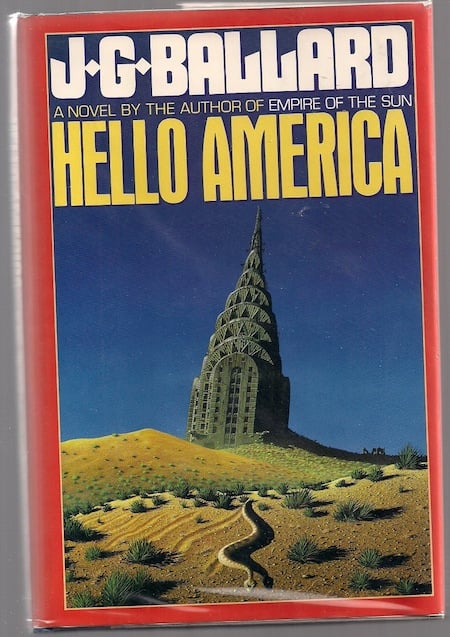
JOSH GLENN’S *BEST ADVENTURES* LISTS: BEST 250 ADVENTURES OF THE 20TH CENTURY | 100 BEST OUGHTS ADVENTURES | 100 BEST RADIUM AGE (PROTO-)SCI-FI ADVENTURES | 100 BEST TEENS ADVENTURES | 100 BEST TWENTIES ADVENTURES | 100 BEST THIRTIES ADVENTURES | 75 BEST GOLDEN AGE SCI-FI ADVENTURES | 100 BEST FORTIES ADVENTURES | 100 BEST FIFTIES ADVENTURES | 100 BEST SIXTIES ADVENTURES | 75 BEST NEW WAVE SCI FI ADVENTURES | 100 BEST SEVENTIES ADVENTURES | 100 BEST EIGHTIES ADVENTURES | 75 BEST DIAMOND AGE SCI-FI ADVENTURES | 100 BEST NINETIES ADVENTURES (in progress) | 1994 | 1995 | 1996 | 1997 | 1998 | 1999 | 2000 | 2001 | 2002 | 2003 | NOTES ON 21st-CENTURY ADVENTURES.
20 ADVENTURE THEMES AND MEMES: Index to All Adventure Lists | Introduction to Adventure Themes & Memes Series | Index to Entire Series | The Robinsonade (theme: DIY) | The Robinsonade (theme: Un-Alienated Work) | The Robinsonade (theme: Cozy Catastrophe) | The Argonautica (theme: All for One, One for All) | The Argonautica (theme: Crackerjacks) | The Argonautica (theme: Argonaut Folly) | The Argonautica (theme: Beautiful Losers) | The Treasure Hunt | The Frontier Epic | The Picaresque | The Avenger Drama (theme: Secret Identity) | The Avenger Drama (theme: Self-Liberation) | The Avenger Drama (theme: Reluctant Bad-Ass) | The Atavistic Epic | The Hide-And-Go-Seek Game (theme: Artful Dodger) | The Hide-And-Go-Seek Game (theme: Conspiracy Theory) | The Hide-And-Go-Seek Game (theme: Apophenia) | The Survival Epic | The Ruritanian Fantasy | The Escapade
Though Jules Verne and some others got there first, I think it’s safe to say that Jack London popularized this sub-genre. In the Fifties and Sixties, some adventure writers — e.g., Alistair MacLean, Hammond Innes, Duncan Kyle — cranked this stuff out non-stop. Readers couldn’t get enough.
NOTES
* See my post on Radium Age Eco-Catastrophe novels.
* See my 2007 Boston Globe item on eco-catastrophes that were not caused by humans.
* Noting that for the Romantics, “Nature” become a way of talking about God without using the G-word, this sub-genre of Adventure often has a crypto-religious feel to it. Often these books pit characters against an extreme environment — such as the sea, polar regions, or desert — in some trial they must endure in order to be redeemed.
* Journey to the Center of the Earth is an 1864 science fiction novel by Jules Verne. German professor Otto Lidenbrock believes there are volcanic tubes going toward the centre of the Earth. He, his nephew Axel, and their guide Hans descend into the Icelandic volcano Snæfellsjökull, encountering many adventures, including prehistoric animals and natural hazards, before eventually coming to the surface again.
* The Fur Country (French: Le Pays des fourrures) is an adventure novel by Jules Verne in The Extraordinary Voyages series, first published in 1873.
* Gabriel De Tarde’s science fiction novella Underground Man (1884). By the year 2489, Plato’s Republic has been realized, for better or worse: a worldwide neo-Hellenic culture of sophistication and creativity dominates; selective breeding is practiced; and weak and stupid individuals of every race are sent to fight wars. As a result, intuition and survival skills have been bred out of the population. So when astronomers determine that the sun is going out, the citizens of this dystopian utopia rapidly lose the will to go on. A sudden drop in temperature wipes out entire populations; the world is covered in ice and snow. Europe’s survivors flee to the Sahara and the Middle East, where the only plan their greatest minds can devise is an inadequate one: a huge, furnace-heated concrete bunker, situated over a rich coal deposit.
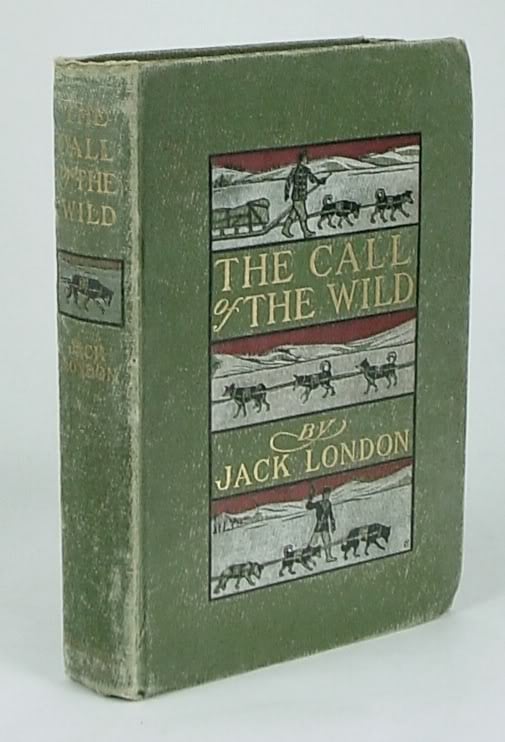
* The Call of the Wild is a novel by Jack London published in 1903. The story is set in the Yukon during the Klondike Gold Rush.
* Louis Pope Gratacap’s Radium Age sf novel The Evacuation of England: The Twist in the Gulf Stream (1908). Despite geologists’ warnings that the Panama Canal will cause the Atlantic and Pacific Oceans to merge, with cataclysmic results, the Canal is finished. (Canal enthusiast Teddy Roosevelt is one of the book’s characters.) Sure enough, entire countries must be evacuated because of climatic changes. Fun fact: Gratacap was a naturalist associated with New York’s American Museum of Natural History for over 40 years.
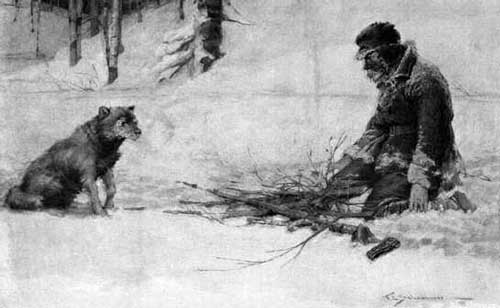
* “To Build a Fire” is the title of two short stories by Jack London published in 1902 and 1908. The 1908 story has become an often anthologized classic; the 1902 story describes a similar situation but has a different, less memorable plot.
* Garrett P. Serviss’s Radium Age sf novel The Second Deluge (1912).
* Arthur Conan Doyle’s Radium Age sf novel The Poison Belt (1913).
* J.J. Connington’s Radium Age sf novel Nordenholt’s Million (1923). As denitrifying bacteria inimical to plant growth spread around the world, causing agricultural blight, British car manufacturer Jack Flint is invited to become director of operations at a huge survivalist colony located in England’s Clyde Valley. Flint discovers that his employer, the ruthless plutocrat Stanley Nordenholt, has blackmailed the country’s politicians in order to establish his stronghold, of which he becomes dictator in all but name. What’s more, Nordenholt’s henchmen purposely wreck what remains of British civilization.
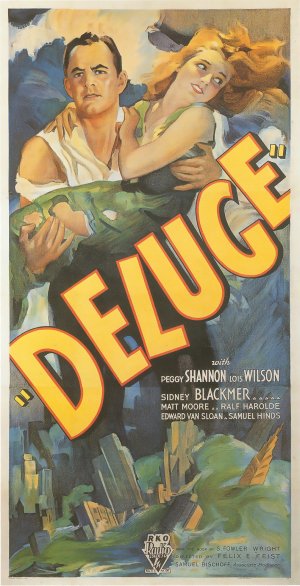
* S. Fowler Wright’s Radium Age sf novel Deluge: A Romance (1927). A global upheaval turns oceans into deserts, and sinks land masses everywhere except what remains of the English midlands, which are transformed into an archipelago. (Hello, Waterworld.) With a marked lack of idealism, Wright — who also translated Dante’s Inferno, and who uses this novel to criticize 1920s British society — tells the story of a new Adam and Eve.
* Fred MacIsaac’s Radium Age sf novel The Hothouse World, serialized in 1931. George Putnam, a science student who’s been in suspended animation since 1951, wakes up a century later in a technologically advanced utopia. He discovers that the domed city in which he now lives was built and stocked — by a foresighted group of scientists and their families — shortly before a comet struck the Earth in ’87. Much of the planet’s atmosphere was dissipated, and human and animal life perished in the new Ice Age.
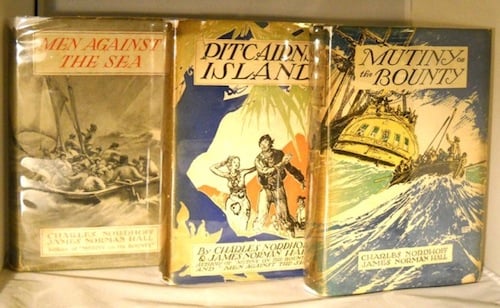
* Mutiny on the Bounty is a 1932 novel by Charles Nordhoff and James Norman Hall, based on the mutiny against Lieutenant William Bligh in 1789. It has been made into several films. It was the first of what became “The Bounty Trilogy”, which continues with Men Against the Sea, and concludes with Pitcairn’s Island.
* James Hilton’s Lost Horizon (1933), right? To the extent that it is an adventure novel, which it really only is at the beginning and end.
* Men Against the Sea (!933) is the second installment in the trilogy by Charles Nordhoff and James Norman Hall about the mutiny aboard HMS Bounty.

* The Hurricane is a 1936 novel by Charles Nordhoff and James Norman Hall about a Pacific Ocean hurricane. It was adapted into two films, The Hurricane (1937), directed by John Ford, and Hurricane (1979), by Swedish director Jan Troell.
* Storm is a novel written by George R. Stewart and published in 1941. The book became a best-seller and helped lead to the naming of tropical cyclones worldwide!
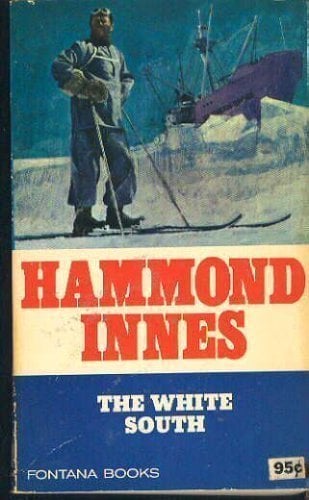
* Hammond Innes’s 1949 thriller The White South.
* Earth Abides is a 1949 post-apocalyptic science fiction novel by George R. Stewart. It tells the story of the fall of civilization from deadly disease and its rebirth.
* Hammond Innes’s 1952 thriller Campbell’s Kingdom.
* The Kraken Wakes (1953), by John Wyndham. In this semi-satirical British novel by the author of The Day of the Triffids, aliens plunge into the Earth’s oceans. After failing to take over the planet by attacking ships and capturing humans from seaside villages, the invaders proceed to melt the polar ice caps. London and other cities are flooded, civilization crumbles, and four-fifths of the world’s population die before humankind finally triumphs.
* Francis Clifford’s The Trembling Earth (1955). I think?
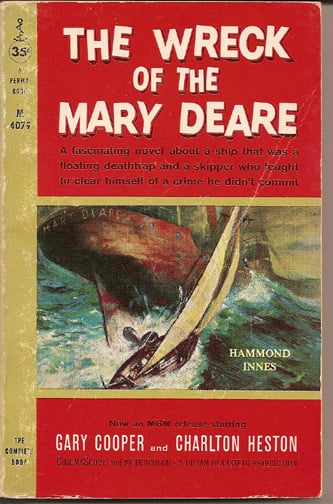
* Hammond Innes’s 1956 thriller The Wreck of the “Mary Deare”.
* Lost in the Barrens is a children’s novel by Farley Mowat, first published in 1956. Some editions used the title Two Against the North.
* John Christopher’s eco-catastrophe novel The Death of Grass (1956).
* Francis Clifford’s Overdue (1957). Survival in the Arizona desert.
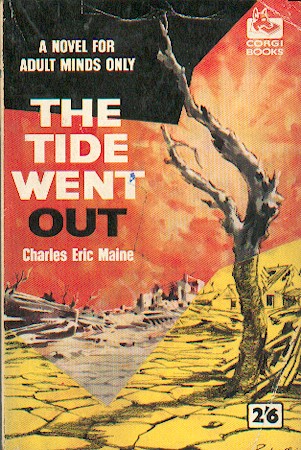
* The Tide Went Out (1958), by Charles Eric Maine. In this British novel, global warming is caused by humans — but it has nothing to do with carbon dioxide. Nuclear tests somehow cause a worldwide drought, at which point the world’s government leaders and their militaries relocate to the ice caps, leaving the majority of the population to die of thirst, starvation, and disease.
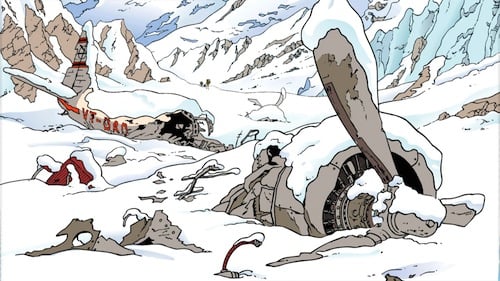
* Tintin in Tibet is the twentieth of The Adventures of Tintin, the series of comic albums written and illustrated by Belgian artist Hergé. Originally serialised from September 1958; it was first published in book form in 1960.
* Night Without End is a thriller novel by Alistair MacLean, first published in 1959. Unforgiving Arctic environment.
* Hammond Innes’s 1960 thriller The Doomed Oasis.
* The Wind from Nowhere, first published in 1961 is the debut novel by J.G. Ballard.
* Voyage to the Bottom of the Sea (1961), written and directed by Irwin Allen. Walter Pidgeon must use atomic weaponry to save the Earth from global warming. It seems that the Van Allen radiation belt girdling the planet has caught fire, and the atmosphere is becoming uncomfortably hot. Pidgeon, accompanied by Peter Lorre, Frankie Avalon, and Barbara Eden, sets out in a nuclear sub to extinguish the “sky fire” with a well-aimed missile.
* Hammond Innes’s 1962 thriller Atlantic Fury.
* The Drowned World is a 1962 science fiction novel by J. G. Ballard. In contrast to much post-apocalyptic fiction, the novel features a central character who, rather than being disturbed by the end of the old world, is enraptured by the chaotic reality that has come to replace it.
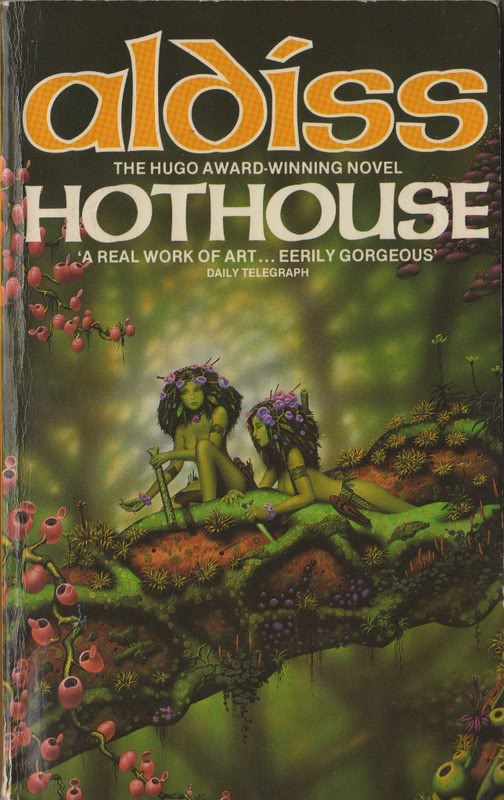
* Hothouse (1962), by Brian Aldiss. Millions of years from now, the Earth has stopped rotating, and one side constantly faces the sun, which has expanded and is about to go nova. The last remnants of humanity seek to escape from carnivorous plants and mutated insects to the moon, which now has a breathable atmosphere. And did I mention that the moon is attached to the Earth with cobwebs?
* Andrew Garve’s The Sea Monks (1963): trigger-happy hoodlums descend upon a lighthouse off the Cornwall coast and take hostages. Extreme weather plays a key role.
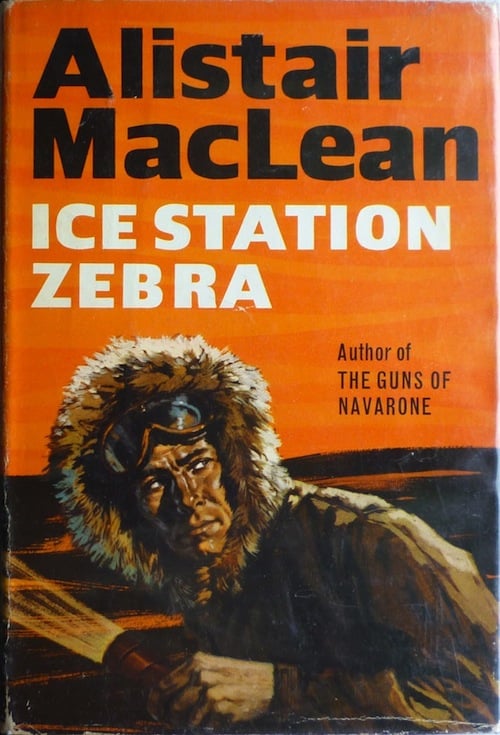
* Ice Station Zebra is a 1963 thriller by Alistair MacLean. It marked a return to MacLean’s favorite Arctic setting. In 1968 it was adapted into a film of the same name.
* The Drowned World, a 1963 novel by J. G. Ballard.
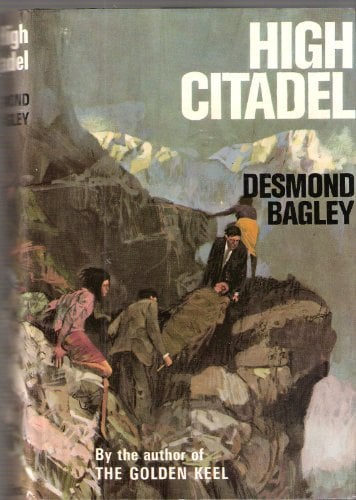
* Desmond Bagley’s 1965 thriller High Citadel. A passenger plane is hijacked by its co-pilot over the Andes causing a crash landing in which the hijacker dies.The pilot attempts to lead the survivors down the mountain because of freezing temperatures but the way is blocked by a damaged bridge, the opposing end of which is… held by soldiers who want them dead!
* Desmond Bagley’s Wyatt’s Hurricane (1966), in which a meteorologist working with the United States Navy’s “Hurricane hunter” flights researches storms and severe weather patterns. He is convinced a hurricane will strike a Haiti-like island nation; no one believes him.
* Make Room! Make Room! is a 1966 science fiction novel written by Harry Harrison exploring the consequences of unchecked population growth on society.
* Stand on Zanzibar is a dystopian New Wave science fiction novel written by John Brunner and first published in 1968. The primary engine of the novel’s story is overpopulation and its projected consequences.
* Hammond Innes’s 1969 thriller The Conquistadors.
* Duncan Kyle’s A Cage of Ice (1970), in which the C.I.A. airlifts a team — of professionals, except for one doctor who stumbles into the thing — into the Arctic to rescue a Russian scientist held prisoner at a remote, frozen outpost in the Soviet Union.
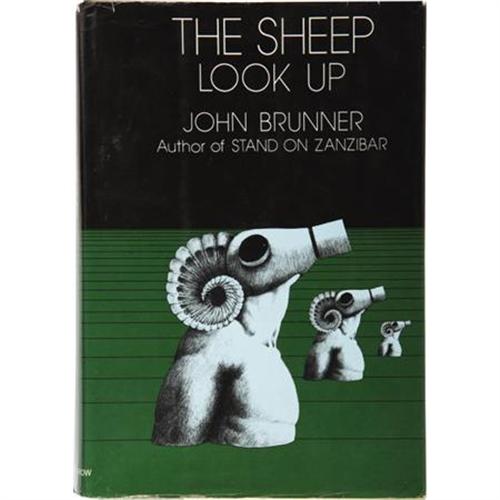
* The Sheep Look Up is a science fiction novel by John Brunner, first published in 1972. The book deals with the deterioration of the environment in the United States.
* Heat is a prescient 1977 eco-thriller by Arthur Herzog.
* The Swarm is a 1978 monster horror film about a killer bee invasion of Texas. It was adapted from a novel of the same name by Arthur Herzog.
* Hello America is a science fiction novel by J. G. Ballard, first published in 1981. The plot follows an expedition to a North America rendered uninhabitable by an ecological disaster. Sardonic inversion?
READ MORE essays by Joshua Glenn, originally published in: THE BAFFLER | BOSTON GLOBE IDEAS | BRAINIAC | CABINET | FEED | HERMENAUT | HILOBROW | HILOBROW: GENERATIONS | HILOBROW: RADIUM AGE SCIENCE FICTION | HILOBROW: SHOCKING BLOCKING | THE IDLER | IO9 | N+1 | NEW YORK TIMES BOOK REVIEW | SEMIONAUT | SLATE
